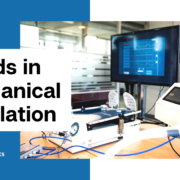
While mechanical ventilation dates back to the late 18th century, it is only within the last century that it has become widely introduced into routine clinical practice. Since then, mechanical ventilation has become exponentially more sophisticated, expanding its application from the ICU to emergency medicine and even in long-term care.
This past year, wide-spread ventilator shortages and changing patient needs caused by the COVID-19 pandemic caused the mechanical ventilation industry to evolve rapidly. Established manufacturers in the field had to ramp up their production schedules putting a strain on the whole supply network. Many new players, manufacturers who had been foreign to this industry, suddenly became involved in the design and production of ventilators. The goal was to meet the existing and potential demand for devices while keeping them effective, affordable, and user-friendly.
Michigan Instruments has played a role in many of these recent development and production efforts by providing our calibrated lung simulators (TTL Training Test Lungs and PneuView Systems) to organizations like Ford Motor Company, Cornell University, OperationAir, and even NASA. The simulators play a necessary role in testing the design and performance of new devices.
Based on these recent efforts and others across the world, here are just a few of the trends we have noticed emerging, and are ready to support, in the mechanical ventilation industry:
- Municipalities, states, regions, and countries have become aware of the need to increase ventilator supply and be prepared for sudden increases in demand. Producing these devices takes time, and situations can arise where time is not an available luxury.
- Thought needs to be put into the kind of ventilators that will be needed. The challenge is, and will continue to be, having a supply of ventilators that will meet the respiratory needs of a variety of patient etiologies, as we don’t know what the next pandemic will look like. What have we learned? Not every ventilator is able to meet the needs of every patient.
- It has become more and more important that ventilators work with the efforts of patients. Mechanical ventilators need to support and augment these spontaneous efforts in order to reduce the work of the patient and allowing healing and recovery to occur. It’s not just breathing “for the patient”. It’s breathing “with the patient”.
- The ability to simulate a wide variety of lung diseases and patient types (including breathing patients) is necessary for the design and testing of mechanical ventilators. Everyone, including newcomers to this business, has seen how important simulation and testing is in this effort. Without realistic simulators and test lungs, we can’t guarantee the performance of these ventilators when they are placed in the clinical setting.
As the respiratory care industry continues to grow and develop in the next few years, Michigan Instruments stands ready to provide medical device developers and researchers versatile, easy to use lung simulators that can help to aid in the design, engineering, testing, and manufacturing of ventilation devices. Our lung simulators offer a wide range of calibrated lung compliance and airway resistance settings. They’re also able to simulate dynamic spontaneous breathing and breathing efforts. This flexibility allows our devices to replicate hundreds of healthy and diseased lung conditions, while providing accurate measurements and data. Learn more about our Lung Simulator Devices and contact us to request a quote!




